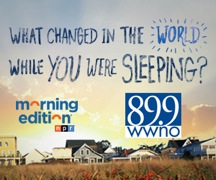Will ‘nones’ make America more liberal?
19th June 2017 · 0 Comments
The steady retreat of religion in America may shift politics to the left. Surveys find that young Americans who say their faith is “none” generally hold humane progressive values, supporting women’s equality, gay rights, universal healthcare, legal marijuana, free college and other liberal goals.
Unfortunately, many “nones” don’t vote. They failed to keep Donald Trump out of the White House and Republicans out of control in most states. Nonetheless, the rising tide of churchless young people eventually may sway the culture toward its “better angels.”
Decline of religion is perhaps the most profound sociological phenomenon of the 21st century. Here’s an example:
A stately United Methodist church in my town is being razed for a parking lot. Old-time members are sad. Loss of once-thriving churches is common nowadays for Methodism and other parts of mainline Protestantism. They’ve suffered a half-century of relentless shrinkage.
Back in the 1960s, when U.S. Methodists merged with Evangelical United Brethren, the faith had 11 million adherents. At that time, the U.S. population was 180 million. Now the United Methodist Church has dropped to just seven million American members, while the nation’s population almost doubled.
The same downsizing hit other mainline branches. America’s two chief Presbyterian denominations (later merged) had 4.2 million members in the 1960s—but now the combined Presbyterian Church USA is down to 1.5 million. The Episcopal Church had 3.6 million in the 1960s, but only 1.8 million today. The Disciples of Christ fell from 1.9 million to 600,000. Etc.
When I came of age in 1950s, so-called mainline Protestantism — respected, “tall-steeple” churches with seminary-educated pastors—was the very essence of America. Catholicism and fundamentalism seemed like fringes.
But U.S. culture shifted. The mainline went into decline, while Catholics and evangelicals climbed, at least for a while. Megachurches featuring dynamic preachers blossomed. Pentecostalism, in which members “speak in tongues,” grew rapidly.
Then secularism — which soared in Europe and other democracies after World War II — hit America. Starting in the 1990s, the number of churchless people rose with surprising swiftness. Now, the Public Religion Research institute says “nones” have become America’s largest category at 25 percent, surpassing Catholics (21 percent) and white evangelicals (16 percent). Mainliners have fallen to around 15 percent, followed by Mormons at perhaps seven percent or less.
Significantly, while Christianity declines in America, it is booming in southern, tropical, Third World nations. Pentecostalism has surged so much in the south that almost one-fourth of all the world’s Christians now follow this emotional faith.
At Easter, the director of the Billy Graham Center at Wheaton College wrote in The Washington Post that America’s mainline Protestants have “just 23 Easters left” if current decline rates continue. Ed Stetzer said:
“Now, less than one of 33 people you meet on the street regularly attends a mainline Protestant church…. Trend lines are showing a trajectory toward zero in both those who attend a mainline church regularly and those who identify with a mainline denomination 23 years from now. While the sky isn’t falling, the floor is dropping out.”
Of course, trends on charts rarely reach zero. But demographics show clearly that U.S. religion has faded with remarkable speed. Secular young people will dominate the future. Will they give America more compassionate values? I certainly hope so.
– James A. Haught
This article originally published in the June 19, 2017 print edition of The Louisiana Weekly newspaper.



